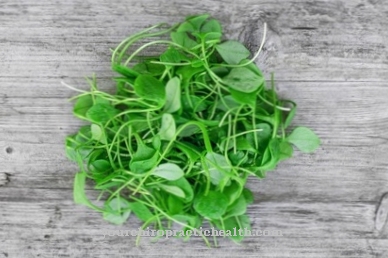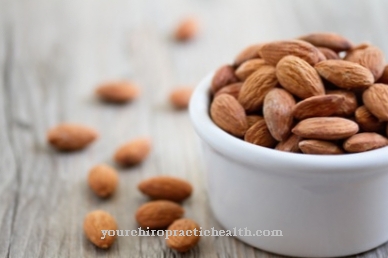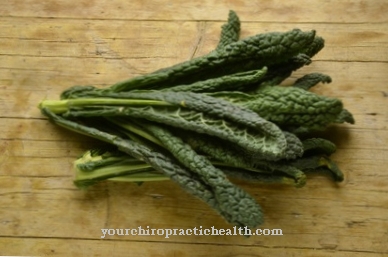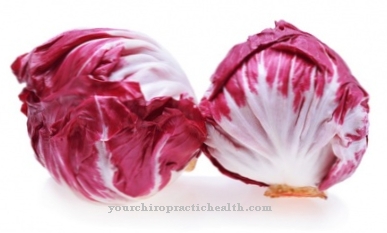The millet, a type of grain that belongs to the sweet grass family, is returning to Europe. The reason for this is that it has excellent positive properties and makes a very important contribution to keeping the body healthy.
What you should know about millet

Millet, the oldest known grain, has long been a staple food for people on every continent. In ancient times and the Middle Ages, it was the most widely grown grain. The word millet comes from the old Germanic word hirsi, which stands for satiety and nourishment.
Since millet is the grain richest in minerals, it is finding its way back into many kitchens after being forgotten for a while. The distribution of millet is mainly due to the fact that vegans and vegetarians have discovered the healthy all-rounder for themselves. The advantages over other types of grain are also appreciated, such as wheat and rye, which are increasingly causing intolerance. The valuable ingredients of millet are of course also convincing.
Importance to health
Millet contains numerous important minerals and trace elements, especially silicon, iron and magnesium. Therefore, the grain has a very positive effect on the bones, joints, skin, hair and nails. In terms of iron content, millet is one of the front runners compared to other grains.
Millet contains two to three times more iron. The trace element is important for blood formation, helps to transport oxygen in the body, to generate energy and to help cells divide. Iron also helps with chronic fatigue. Magnesium is also an important mineral contained in millet. It is involved in almost all body functions. A deficiency can lead to many different chronic diseases, for example cardiovascular problems, diabetes, chronic inflammatory processes, etc. Since millet does not contain gluten, it is easy to digest and easily digestible.
In contrast to many other types of grain, millet does not produce acids, but bases. This leads to less mucus formation in the body. If you are prone to gallstones, you should eat millet more often, as the grain is said to have a preventive effect. The yellow millet kernels swell up a lot so that they fill the stomach quickly and fewer calories are absorbed. At the same time, this means that fluctuations in the blood sugar level are kept to a minimum. Millet can thus protect against diabetes and obesity. The high silicon content in the grain ensures beautiful hair and nails a healthy complexion. The fluorine contained in millet has a positive effect on dental health and tooth enamel.
Ingredients & nutritional values
Millet contains around 10 percent protein, 70 percent carbohydrates, up to 5 percent fat, B vitamins, some beta-carotene and the important vitamin C. It is particularly impressive when it comes to vitamins B1, B5 and B6. There are also many minerals and trace elements, especially silicon, iron and magnesium. Other valuable ingredients in millet are potassium, calcium, silica, sodium and fluorine.
Intolerances & allergies
Millet must not be consumed raw as it contains enzymes that damage proteins. They are only rendered harmless by cooking or roasting. From a biological point of view, the protein in the grain is not of very high quality. A long-term diet with only millet would therefore result in a protein deficiency. In addition, the small yellow millet pearls are rich in phytin. This substance inhibits or reduces the absorption of important minerals such as calcium, iron, magnesium and zinc.
Shopping & kitchen tips
There's not much you can do wrong with buying millet. In Germany, the grains are usually packaged, peeled and sold in their raw form. You should only make sure that the millet comes from organic and ecological cultivation. This millet is of better quality.
Peeling the millet was also gentler on these grains. The best-before date should be observed when storing. In addition, they should be stored in a dark and dry place, for example in the cellar, as the millet can otherwise go rancid, which can be seen from the scent. If the millet is bought fresh from the farmer, it will likely need additional drying. To do this, it is spread out flat and initially shoveled around every one to two days. If millet is properly stored, it is possible to keep it for several years without any problems. Storing it in the refrigerator does not extend the shelf life.
To prepare, the millet grains are soaked in water for one to two hours before cooking. In this way, some of the incompatible phytin that is in and under the skin of the grain can be removed. In addition, the abundant minerals are better utilized later. The water is then thrown away so that no residues get into the food. Then you can start preparing the millet.
Preparation tips
Millet was already consumed 8000 years ago, for example in China. For this purpose, flatbreads were prepared from the grain. Millet is still very popular in wholefood cuisine today. This is not surprising as it contains many healthy nutrients. Millet, which tastes slightly nutty, can be used in many ways in the kitchen. For example, it can be cooked in broth and served like risotto, either pure or enriched with vegetables or herbs.
In a preparation similar to rice, it should be noted that millet absorbs much more water. Therefore, it may be possible that liquid has to be added continuously. In addition, good salting is a must to achieve a grainy consistency. Otherwise, the result is a porridge without a bite, which of course can be wanted with small children. Cooked millet can also be formed into dumplings and used as an insert in a soup. Millet is also suitable for casseroles, the production of pancakes and patties and the production of beer. Some producers use the grain to make gluten-free beer. This can also be enjoyed by people with celiac disease.
First of all, a creamy porridge is prepared for millet patties. You can also use broth instead of water. Then the porridge is mixed with chopped vegetables and fresh herbs to form millet meatballs, which are fried on both sides in a little fat. This delicious meal, with which the ingredients can be selected as required, not only delights vegans and vegetarians. There are many tasty millet recipes, ranging from millet porridge, millet groats, millet casserole or salad, millet dumplings, patties to pizza dough with millet.
However, millet should always be eaten together with fruit or vegetables containing vitamin C, because then the body can optimally utilize the numerous minerals and vitamins it contains. The vegetable iron contained in millet can also be better used. For an optimal protein supply, vegetarians should prepare the millet with eggs or dairy products.













.jpg)

.jpg)
.jpg)











.jpg)